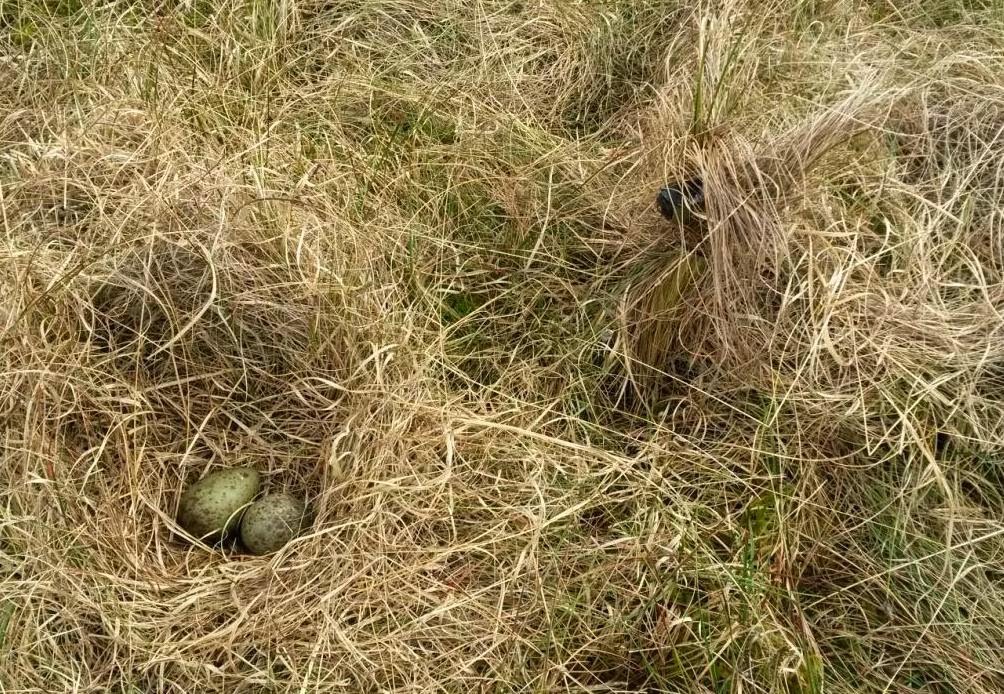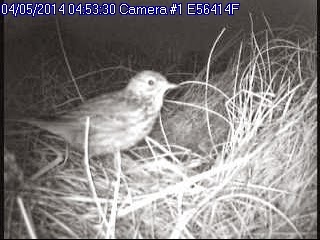Our curlew nest monitoring project is
slowly building momentum as we move through the breeding season. We have been
monitoring three nests since the first week in May using small motion-detecting
night vision video cameras. The footage we’ve recorded so far has given us a
great insight into life on the nest, as we have watched the parents building up
the nest cup and taking turns in sharing incubation responsibilities.
 |
| A female curlew on the nest. |
 |
| Doing a spot of nest repair. |
Eggs are laid every day or two, with a full
clutch usually comprising four eggs. The birds do not start continuous
incubation until all eggs are laid, in order that they hatch at a similar time.
We have recorded lower than average clutch sizes for our birds, with two pairs
incubating three eggs and one pair managing only two.
 |
| Two curlew eggs under the watchful eye of our nest camera. |
Unfortunately the two pairs with three eggs
did not make it beyond a few days of incubation before they lost their eggs to
predation – night time visits from a fox and a badger ending their first
breeding attempts. Pairs losing their eggs early on will usually attempt a
second brood so we’ll be keeping an eye out for these birds again.
 |
| Clear views of a badger helping itself to an egg. |
 |
| Windblown grass doesn't quite obscure this fox making a quick visit. |
There were a couple of other slightly
unexpected visitors to one nest, though these didn't do any harm!
 |
| A wandering meadow pipit in the night. |
 |
| A sheep which thankfully decided against eggs for breakfast. |
The third nest is still going well with
both birds sharing the incubating. So far it seems that the female will
incubate during the day and the male through the night, with the male spending
slightly more time on the nest overall. Fingers crossed this pair makes it to full
28-30 days of incubating. The short video below shows the birds changing shifts
with the female (larger with a longer bill) flying off and the male arriving
and settling down.
I’ve just found a fourth nest this morning
which will get a camera this afternoon so we’ll be able to follow the fortunes
of both these nests over the coming days – with hopefully more to come!
Kim L.








Excellent stuff. Is the thinking that badgers and foxes are one of the main causes for this birds decline, or is it just one of several contributory factors? We know that badger and fox numbers have increased over recent years.
ReplyDeletePredation as a whole is likely to be one of a number of factors. On the Eastern Moors, from previous years' work, we know eggs have been predated but we don't know what effect this is actually having on productivity (pairs can have a second clutch if the first fails) and until now we've only been able to guess which predators were responsible. As well as the nest cams we're carrying out productivity surveys, looking at habitat preferences and monitoring predator numbers, all of which will hopefully give us a better idea of how big an impact this is having.
ReplyDeleteKim.